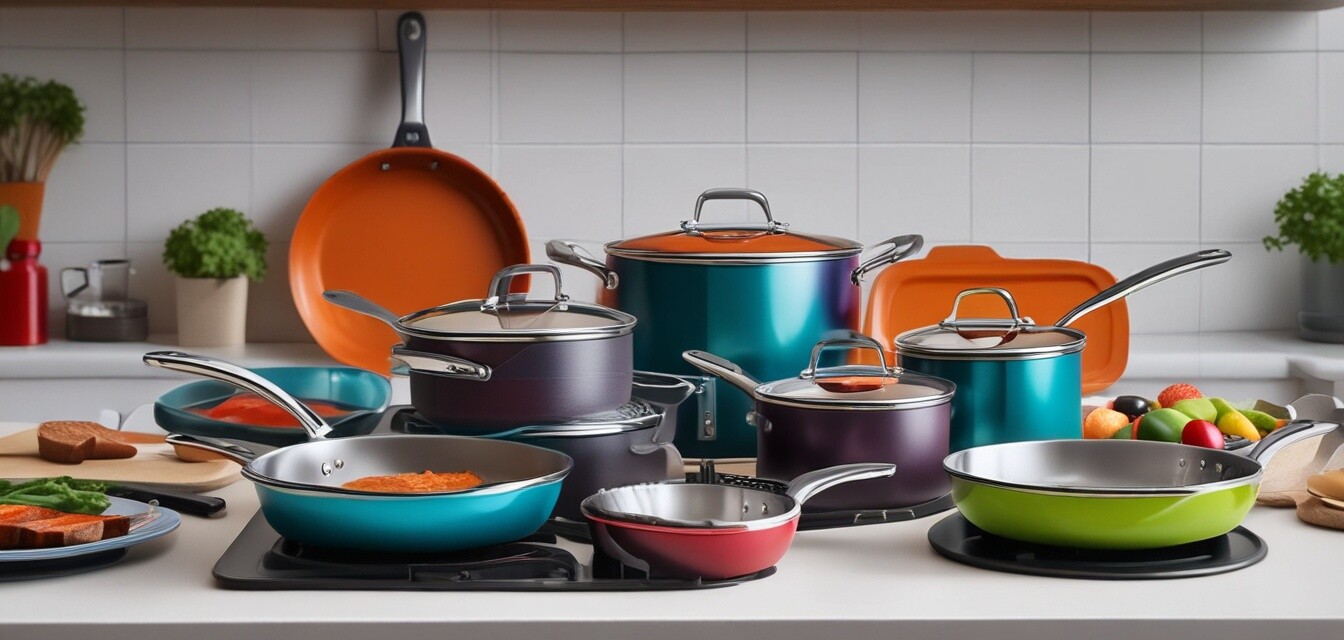
The Complete Guide to Non-Stick Cookware
Key Takeaways
- Non-stick cookware is easy to clean and requires less oil for cooking.
- Look for PFOA-free options for safer cooking.
- Proper maintenance is key to prolonging the life of your cookware.
- Diverse materials offer different benefits; familiarize yourself with each type.
- Consider your cooking needs when choosing the right non-stick options.
When it comes to cooking, having the right tools can make a significant difference. One essential tool that has become a staple in many kitchens is non-stick cookware. This complete guide delves into everything you need to know about non-stick cookware, including its benefits, maintenance tips, and the factors to consider when selecting the best pieces for your kitchen.
What is non-stick cookware?
Non-stick cookware refers to a variety of pots, pans, and baking items that have a special coating that prevents food from sticking during cooking. This innovative coating not only enhances the cooking experience but also makes cleanup much easier.
Benefits of non-stick cookware
- Easy to clean: The non-stick surface makes it much easier to remove food residues, reducing the time spent on cleanup.
- Less oil needed: Non-stick cookware requires less oil or butter, promoting healthier cooking.
- Even heat distribution: Many non-stick options provide uniform heating, which helps in achieving consistent cooking results.
- Versatility: Non-stick pans can be used for a wide range of cooking, from frying eggs to making pancakes or sautéing vegetables.
Types of non-stick coatings
Different non-stick cookware comes with various coatings that affect performance and safety. Here’s a summary of the most common non-stick coatings:
| Type of Coating | Pros | Cons |
|---|---|---|
| PTFE (Teflon) | High durability, excellent non-stick properties | Can degrade at high temperatures if not cared for properly |
| Ceramic | Eco-friendly, free from chemicals | Less durable than PTFE, may require more maintenance |
| Hard-Anodized Aluminum | Strong and durable, distributes heat evenly | Can be costly; non-stick coating may wear off |
| Cast Iron (Enameled) | Retains heat well, great for browning foods | Heavy and requires more maintenance |
Choosing the right non-stick cookware
When shopping for non-stick cookware, consider the following factors:
- Material: Decide on the material that suits your cooking style—whether you prefer lightweight or heavy-duty options.
- PFOA-free: Ensure the cookware is free from harmful substances like PFOA for safer cooking.
- Size and type: Choose sizes and types (frying pans, saucepans, etc.) based on your cooking habits and family size.
- Compatibility: Check if it is compatible with your stovetop type (e.g., induction).
- Durability: Look for the durability of the coating and warranty offered.
Maintenance tips for non-stick cookware
Proper maintenance will help extend the life of your non-stick cookware:
- Use wooden or silicone utensils to avoid scraping the non-stick surface.
- Avoid high heat; stick to medium or low heat settings.
- Hand wash your cookware with a soft sponge instead of placing it in the dishwasher.
- Store pots and pans carefully, using protective layers like cloth to prevent scratching.
Common misconceptions about non-stick cookware
There are several myths surrounding non-stick cookware that can lead to misunderstandings:
- Myth: All non-stick cookware is the same. Fact: There are various coatings with unique benefits and drawbacks.
- Myth: Non-stick cookware is not safe. Fact: When used properly, quality non-stick cookware is safe.
- Myth: Non-stick pans last forever. Fact: With proper care, they can last several years, but the coating does wear out over time.
Tips for beginner cooks
If you’re new to cooking or using non-stick cookware, here are some helpful tips:
- Start with basic recipes to gain confidence.
- Experiment with different cooking techniques using your non-stick pans.
- Pay attention to heat settings; low to medium is usually best.
- Practice cleaning your cookware right after use for better longevity.
Conclusion
Non-stick cookware is an important addition to any kitchen, providing convenience and ease in cooking. By understanding the benefits, maintaining your cookware correctly, and choosing the right pieces based on your needs, you can create delicious meals without hassle. For more information on kitchen products, check out our Buying Guides page, where you'll find everything you need to equip your kitchen.
Pros
- Convenient for cooking and cleaning.
- Reduces the amount of oil needed for cooking.
- Diverse cooking options available.
Cons
- May scratch or wear out over time.
- Some coatings can be sensitive to high temperatures.
- Can be more costly than traditional cookware.